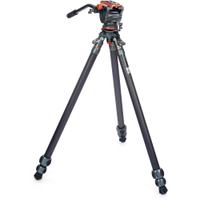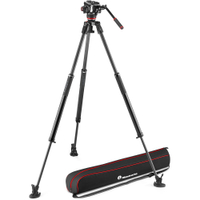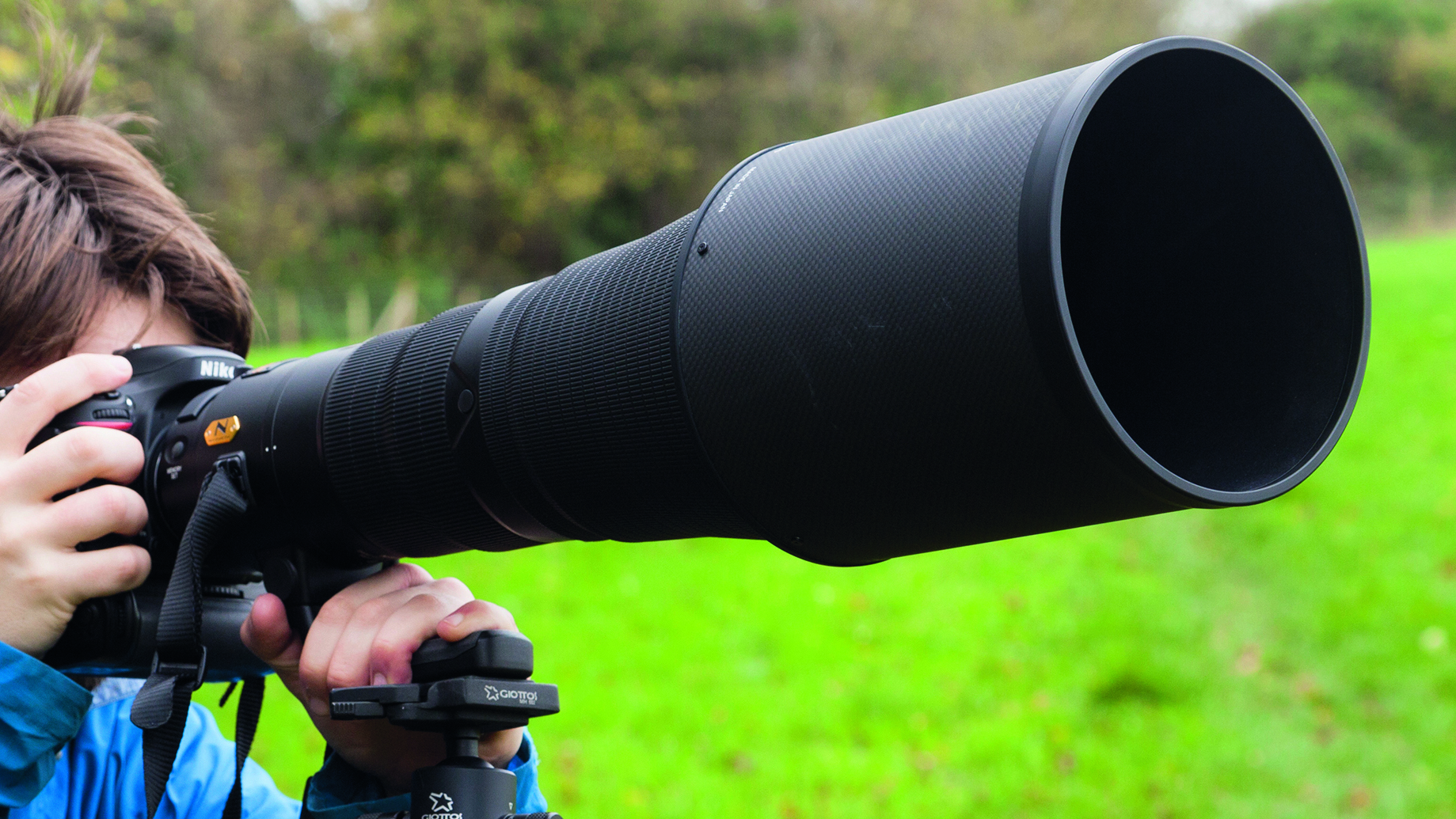Digital Camera World Verdict
I like that the SmallRig x Potato Jet TRIBEX Hydraulic Carbon Fiber Tripod Kit is fairly quick and easy to set up for a video tripod, and that it’s easily manageable to carry around. However, while the hydraulic design makes levelling speedy, I feel it’s a little lacking in precision compared with most conventional video tripods.
Pros
- +
Quite quick and easy to set up
- +
Fluid head with counterbalance
- +
Good range of adjustments
Cons
- -
A little lacking in precision
- -
Delayed hydraulic locking
- -
Not particularly rigid
Why you can trust Digital Camera World
SmallRig is a Chinese company that has been making a growing range of gadgets since 2013, specializing in camera supports and stabilizers, smartphone accessories, lighting and control systems, and mobile power solutions.
The video tripod that I’m reviewing here is the fruit of a collaboration with Gene Nagata, an American YouTuber who goes by the name of Potato Jet and is most widely known for his videos on, well, shooting video. The idea was to create his ideal tripod, let’s see how well it works for the rest of us and if it qualifies as one of the best video tripods on the market.
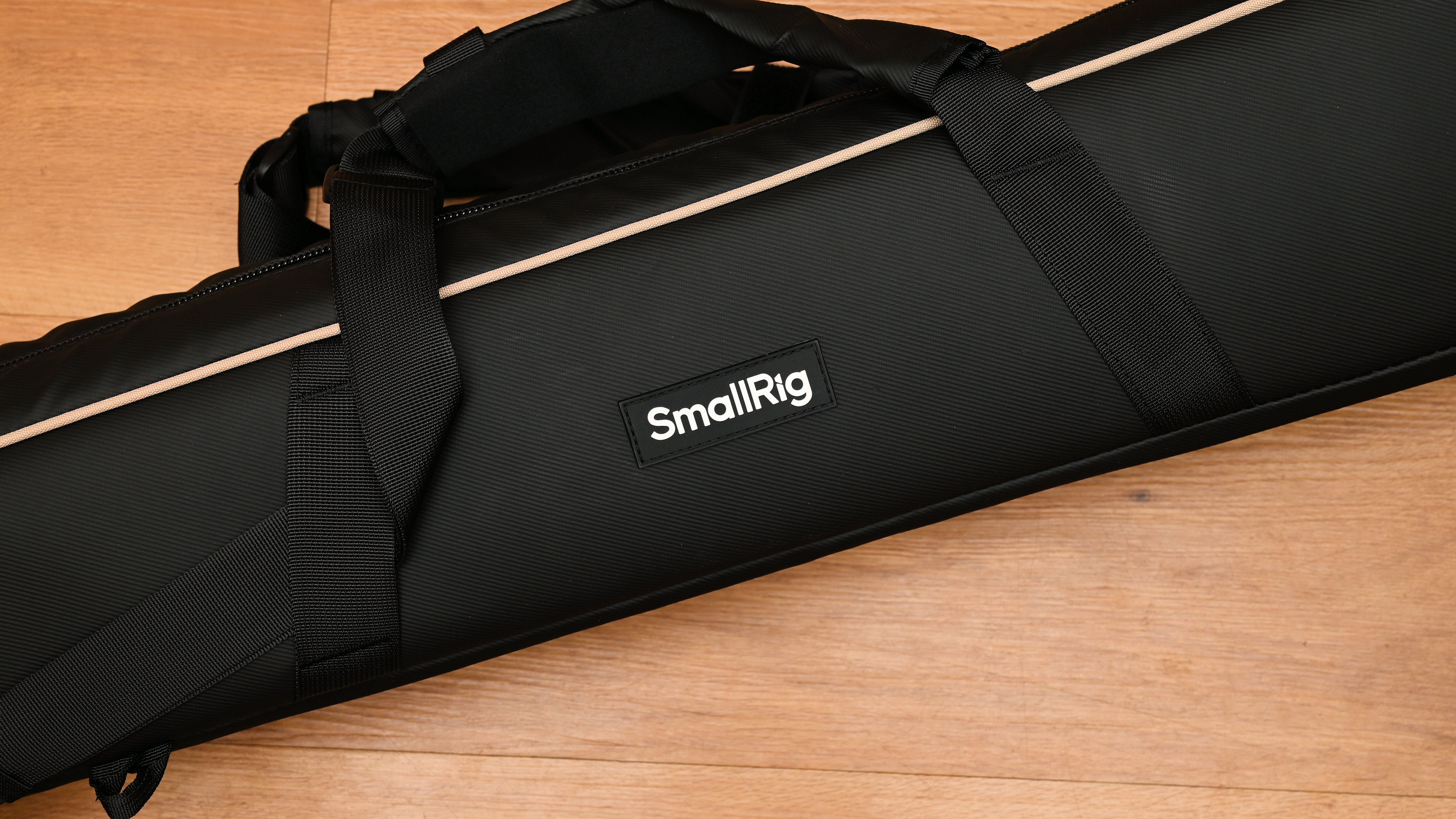
SmallRig x Potato Jet: Specifications
| Material | Carbon Fiber |
| Folded height | 31.1" / 79cm |
| Maximum operating height | 66.1" / 168cm |
| Minimum operating height | 10.6" / 27cm |
| Head | Fluid head |
| Weight | 8.2lb / 3.7kg |
| Load rating | 13.2lb / 6kg |
| Sections per leg | 3 |
| Leg section diameters | 29.4, 25.6, 22mm |
| Locking leg angles | 3 |
| Feet | Spikes, removable shoes |
| Case/bag included | Padded soft case |
SmallRig x Potato Jet: Price
Good video tripod kits don’t come cheap. I’ve been impressed with the 3 Legged Thing Legends Mike Carbon Fiber Tripod with AirHed Cine-V Fluid Head System, which costs around $899/£749 and the Manfrotto 504X Fluid Video Head with 635 Fast Single Carbon Leg, at around $1318/£1325. The SmallRig x Potato Jet TRIBEX Hydraulic Carbon Fiber Tripod Kit takes a more unconventional twist on levelling, bringing hydraulics into the equation, and is fairly reasonably priced for an up-market, carbon fiber video tripod at around $799/£769.
SmallRig x Potato Jet: Design & Handling
There’s a crucial difference between tripods for videographers and regular tripods for photographers. When you’re setting up a tripod to take a photograph, all you need to do is to level the head, which is quick and easy. When you’re shooting video, the platform on which the head is mounted needs to be levelled. If it isn’t, everything goes on the slant when you start panning. That can involve a lot of faffing around with adjusting each leg individually, especially when you’re shooting on uneven terrain. Specialist video tripods typically have a levelling base, utilizing a half-bowl or similar system, so that even if the legs aren’t perfectly levelled, you can precisely level the platform on which the head is mounted. The head itself, will generally be a ‘fluid head’, enabling smooth movement for tilting and panning. So what’s different about the Potato Jet?
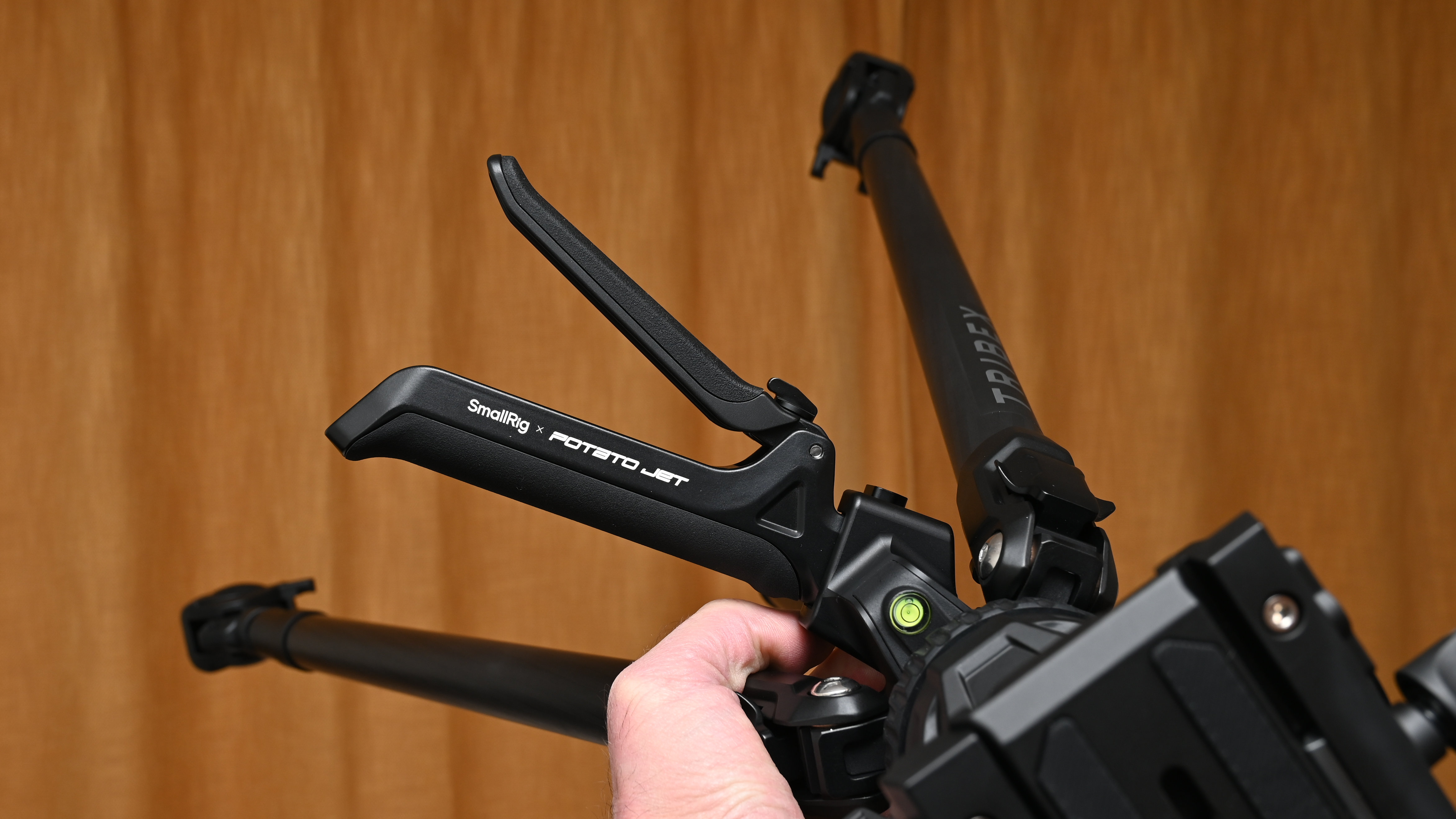
In a nutshell, the Potato Jet avoids the need for individually adjusting all of the sections in all of the legs, when you’re setting up your tripod. For example, if your tripod has 3-section legs, that’s a total of six locking clamps to contend with. Instead, the Potato Jet has a single ‘X-clutch’ lever which uses hydraulics to release all the leg sections simultaneously. Simply pull the lever and the leg sections all drop down under gravity. Release the lever again and they lock in place.
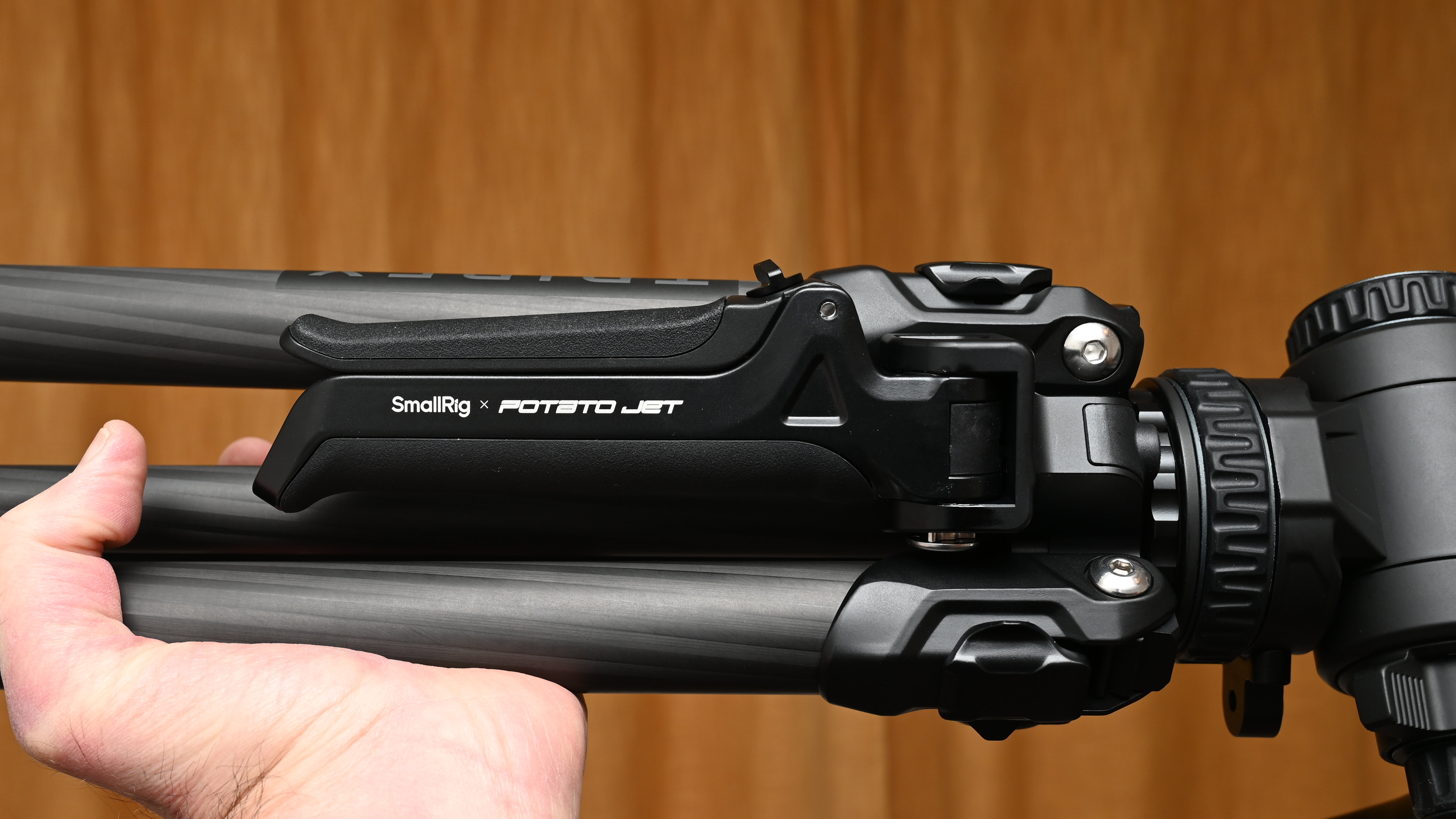
It sounds simple and, to some extent, it is. By keeping an eye on the bubble level mounted on the tripod spider, or the virtual horizon on your camera screen, it’s fairly easy to hold in the clutch lever and maneuver the tripod until it’s level. However, it takes a couple of seconds for the hydraulics to lock the leg sections in place after releasing the lever, which can cause problems, as I’ll come to later in ‘performance’.
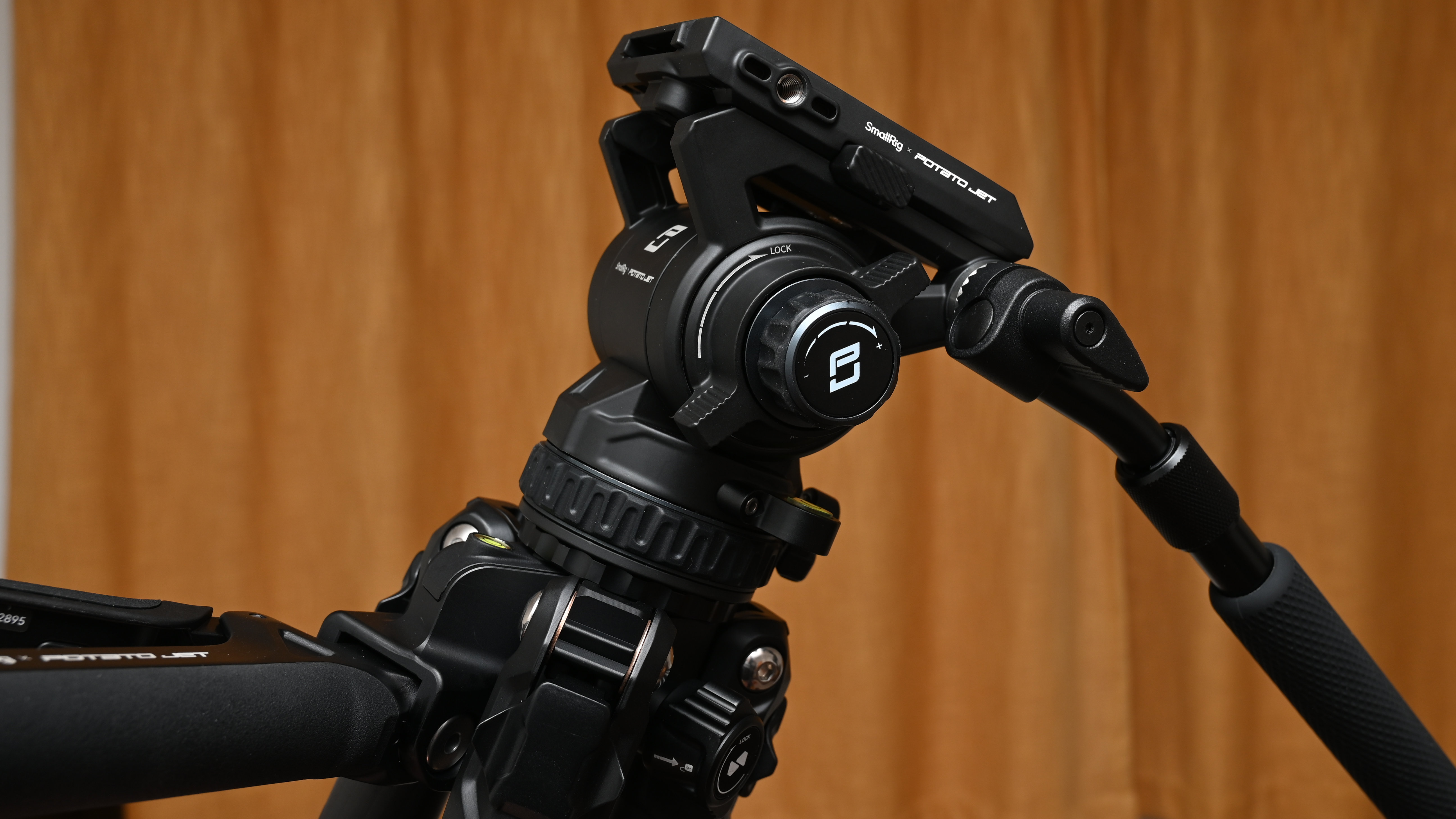
As the Potato Jet relies solely on its hydraulics for leveling the tripod, there’s no half-bowl or other leveling mechanism in the platform beneath the head, which is relatively conventional for a fluid video head. As such, it has a dual lock and friction adjuster for its tilt mechanism. The locking clamp forms the outer, while the adjustable friction damper is mounted within the clamp’s circumference.
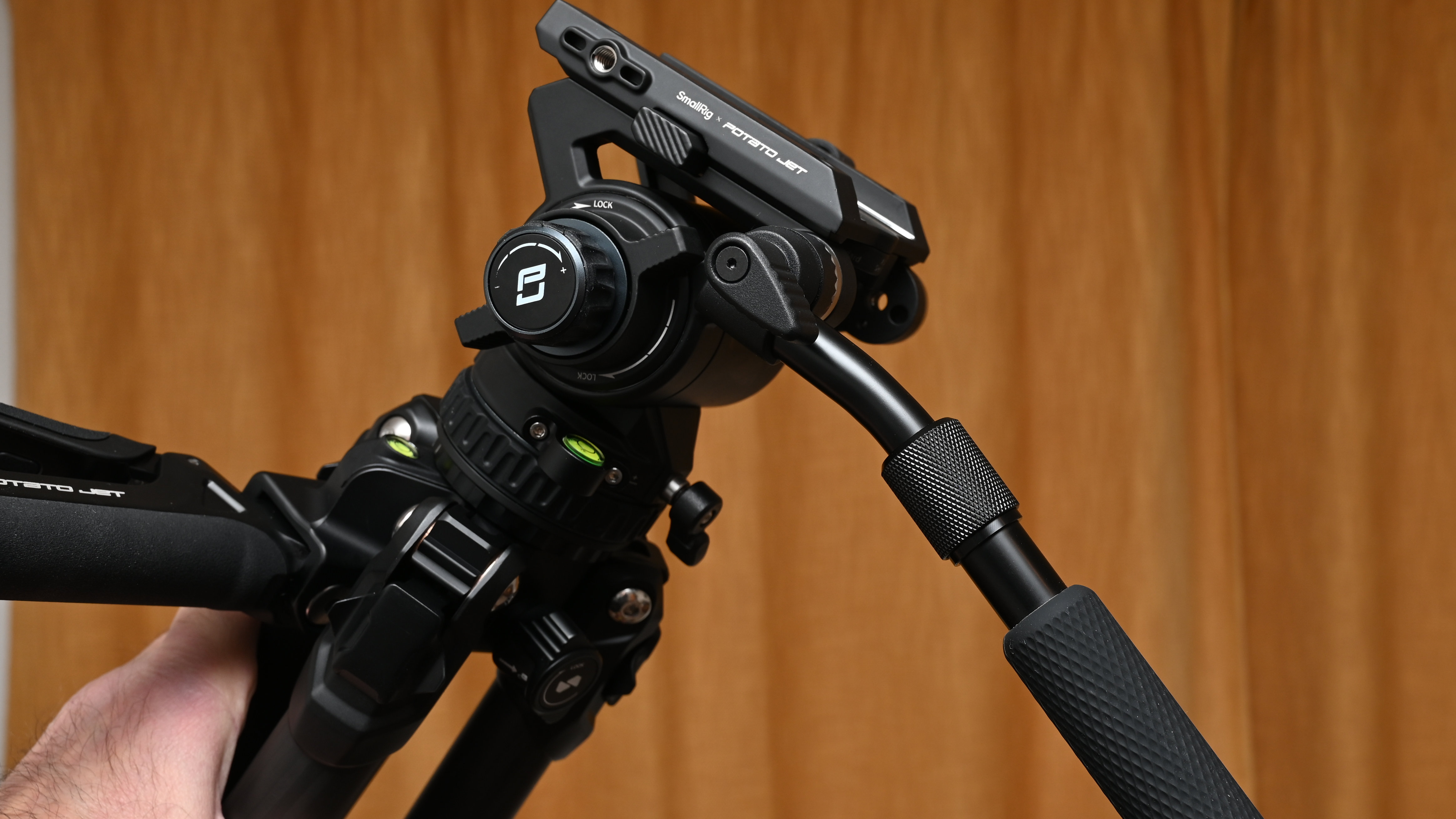
You also get a similar dual arrangement for locking and altering the fluid drag for panning. There’s a locking screw at the base of the head and an adjustable friction damper around the circumference of the base. The lever for the locking screw can be pulled out and repositioned for convenience.
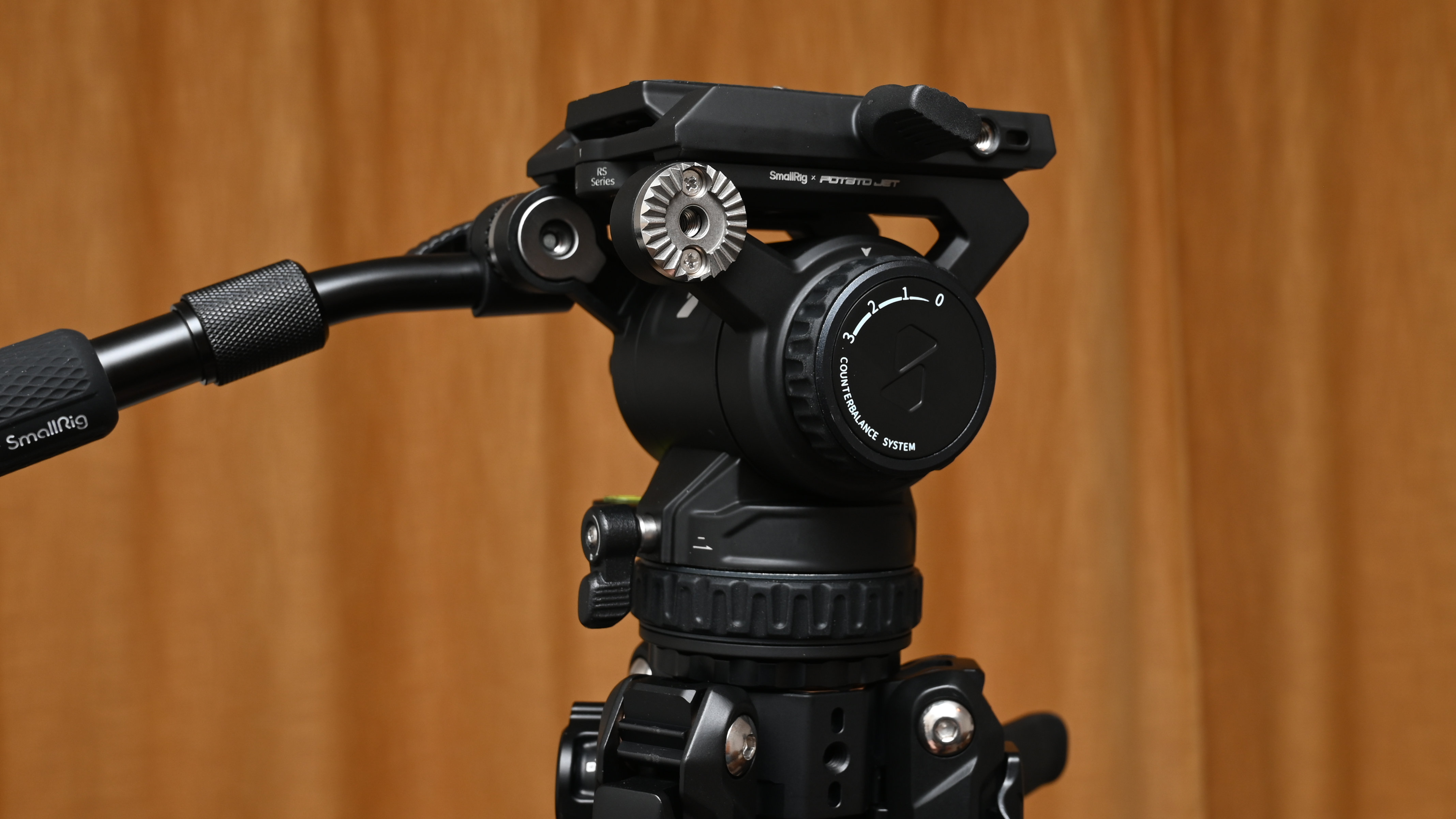
On the right hand side of the head is a dial for adjusting the counterbalance. This is something that’s often omitted in relatively cheap video tripod heads but is a welcome addition, especially as the maximum load rating goes up to 13.2lb / 6kg. As I’d also expect in a quality video tripod, there’s an adjustable, telescopic panning handle which can mount to either the left or the right side of the head.
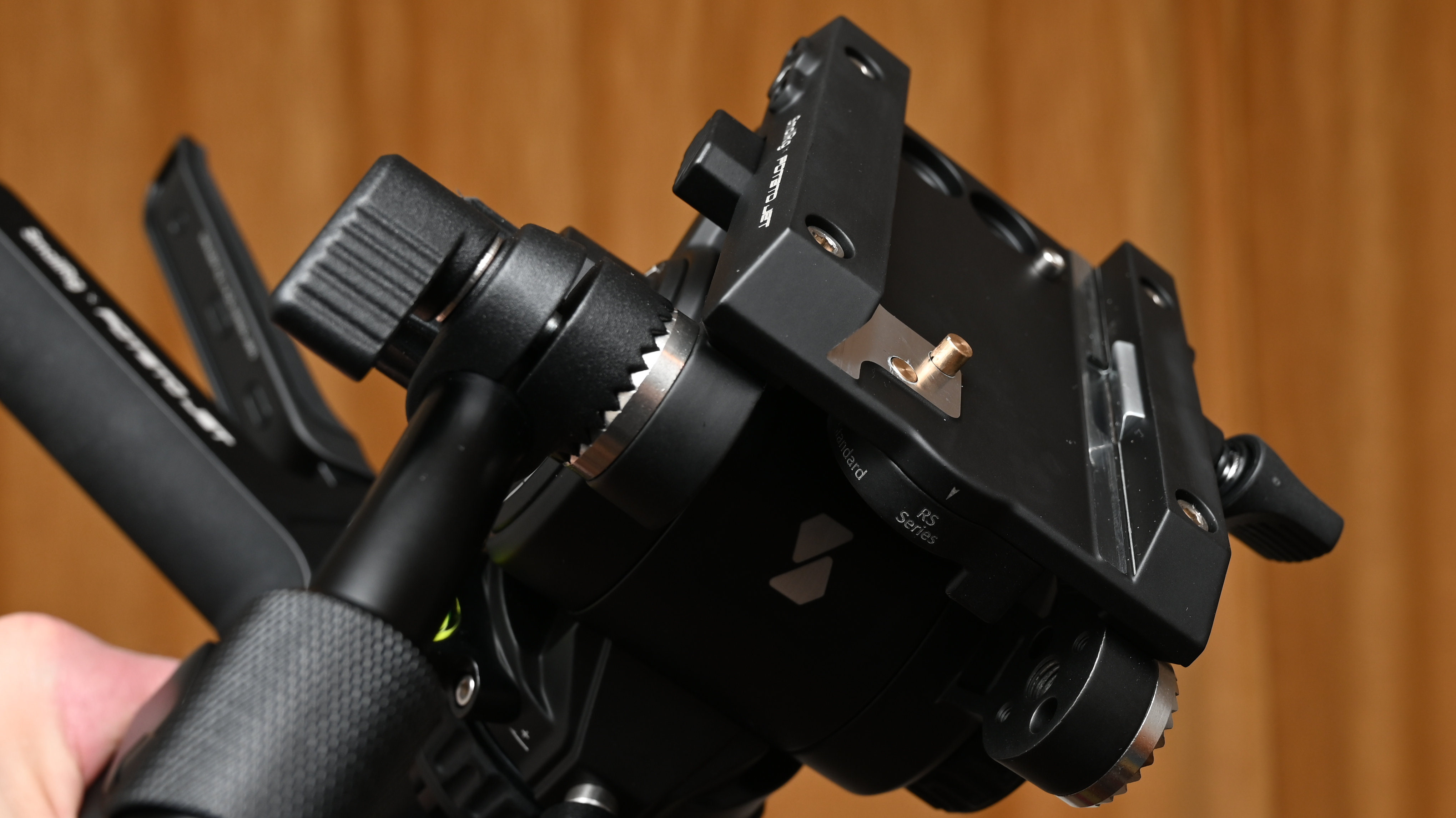
Another thing I like about the Potato Jet is that it has a simple lever for switching between the supplied Manfrotto 501-style quick-release plate and a DJI RS-style quick-release plate, so you can keep your options open without any timewasting.
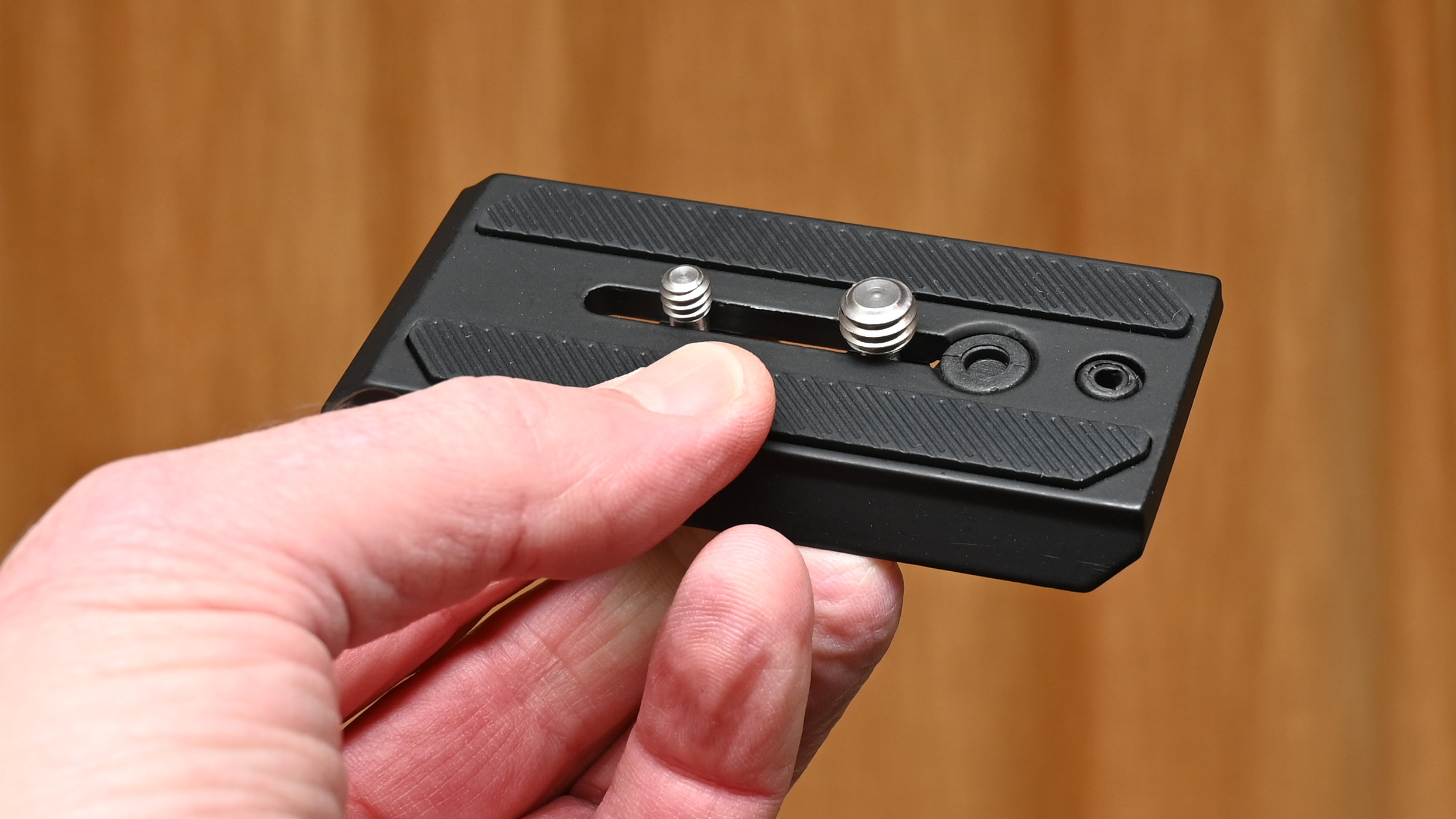
Moving down from the head, the spider has a lock/release knob for extending the center column, at the bottom of which is a removable weight hook. The legs have three different locking angles, wider angles being more useful for low-level shooting or for working around obstacles. The feet are made from rubber pads which slide off to reveal dual spikes, thus suiting different types of hard and soft terrain.
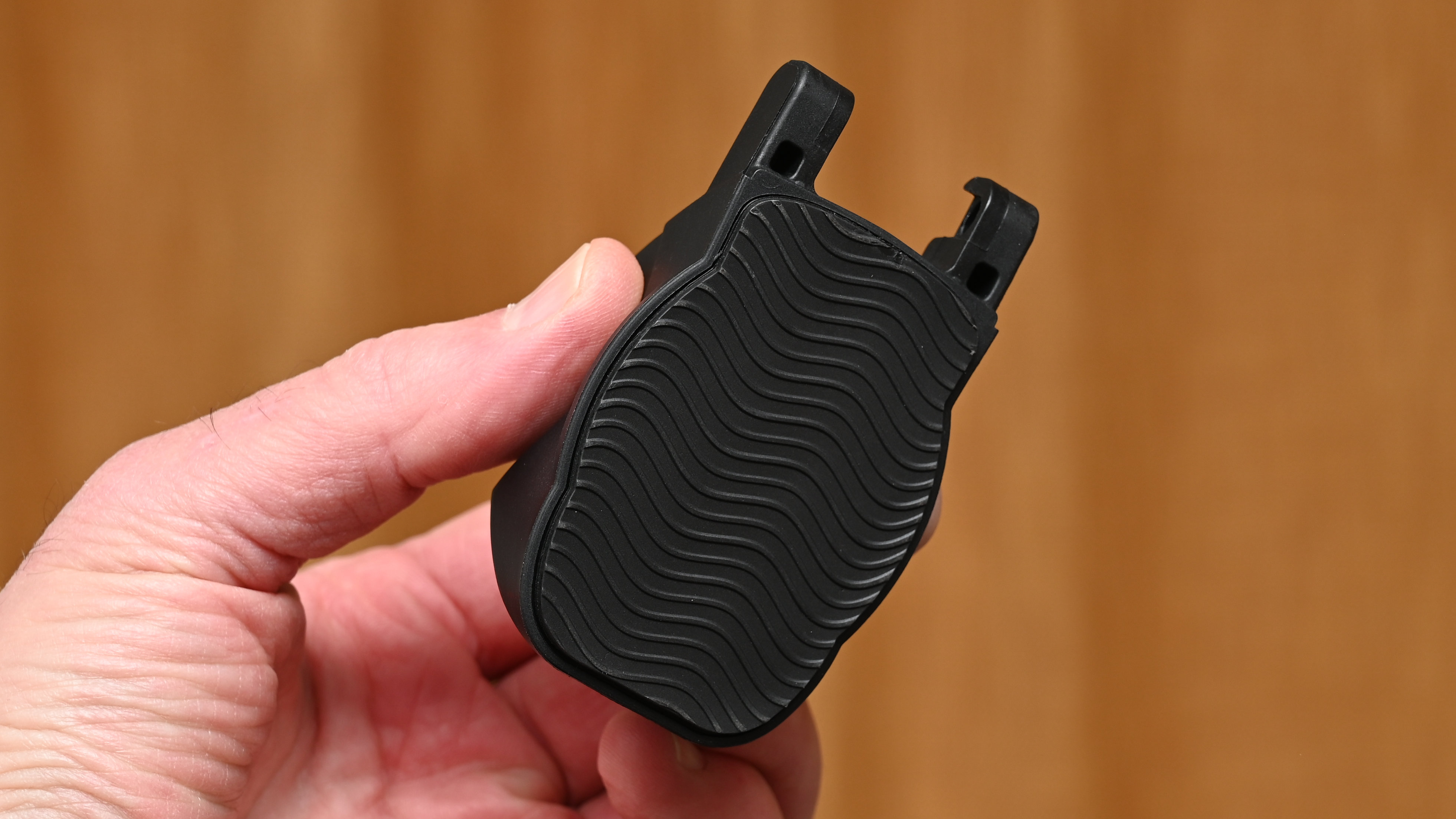

SmallRig x Potato Jet: Performance
I do love a bit of speed and ease when it comes to setting up tripods and, especially for video tripods, that can be a real challenge. I found that the X-clutch hydraulic system of the Potato Jet was certainly quick and easy to use. However, for ensuring that the tripod was levelled absolutely, I found it lacked the precision of a more conventional half-bowl or other levelling mechanism. I also found that the clutch lever took a bit of getting used to. It takes a couple of seconds for the hydraulics to lock the legs after releasing the clutch lever, so you need to hold the tripod in position for a little longer than you might anticipate. Ultimately, what you gain in setup speed, you lose in precision and positional fine-tuning.
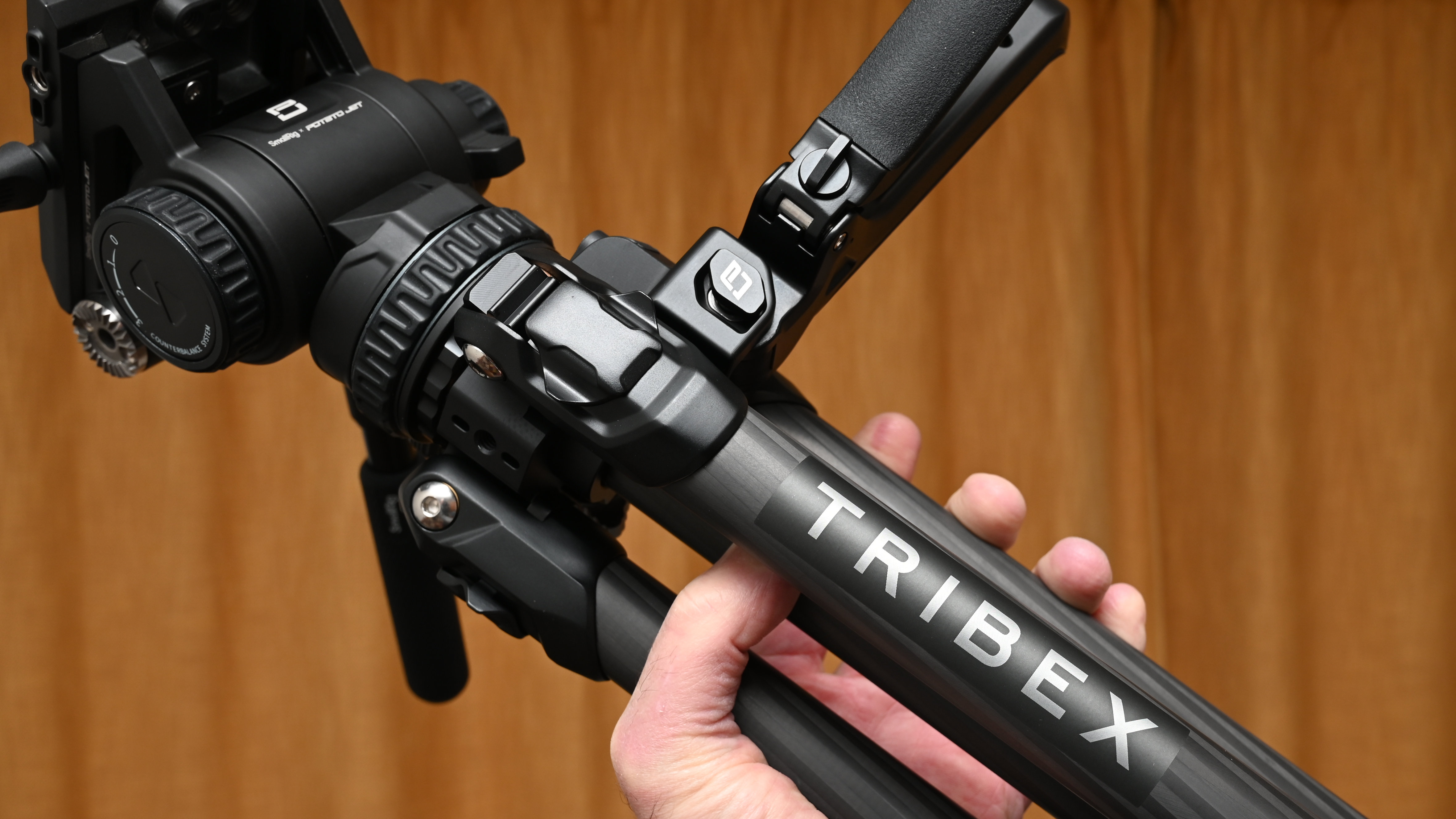
I always think that size matters, when it comes to the performance of any tripod. There’s a good mix here, in that the Potato Jet folds down to 31.1" / 79cm and weighs 8.2lb / 3.7kg, making it easy to carry around and pack away into fairly small spaces. Even more importantly, it has a good operating range in terms of height, stretching from 10.6" / 27cm to 66.1" / 168cm. The payload rating of 13.2lb / 6kg is pretty respectable but I found the tripod was a little lacking in rigidity and more prone to vibration than I was expecting. That was especially true at or near the maximum operating height, with all the leg sections and center column extended.
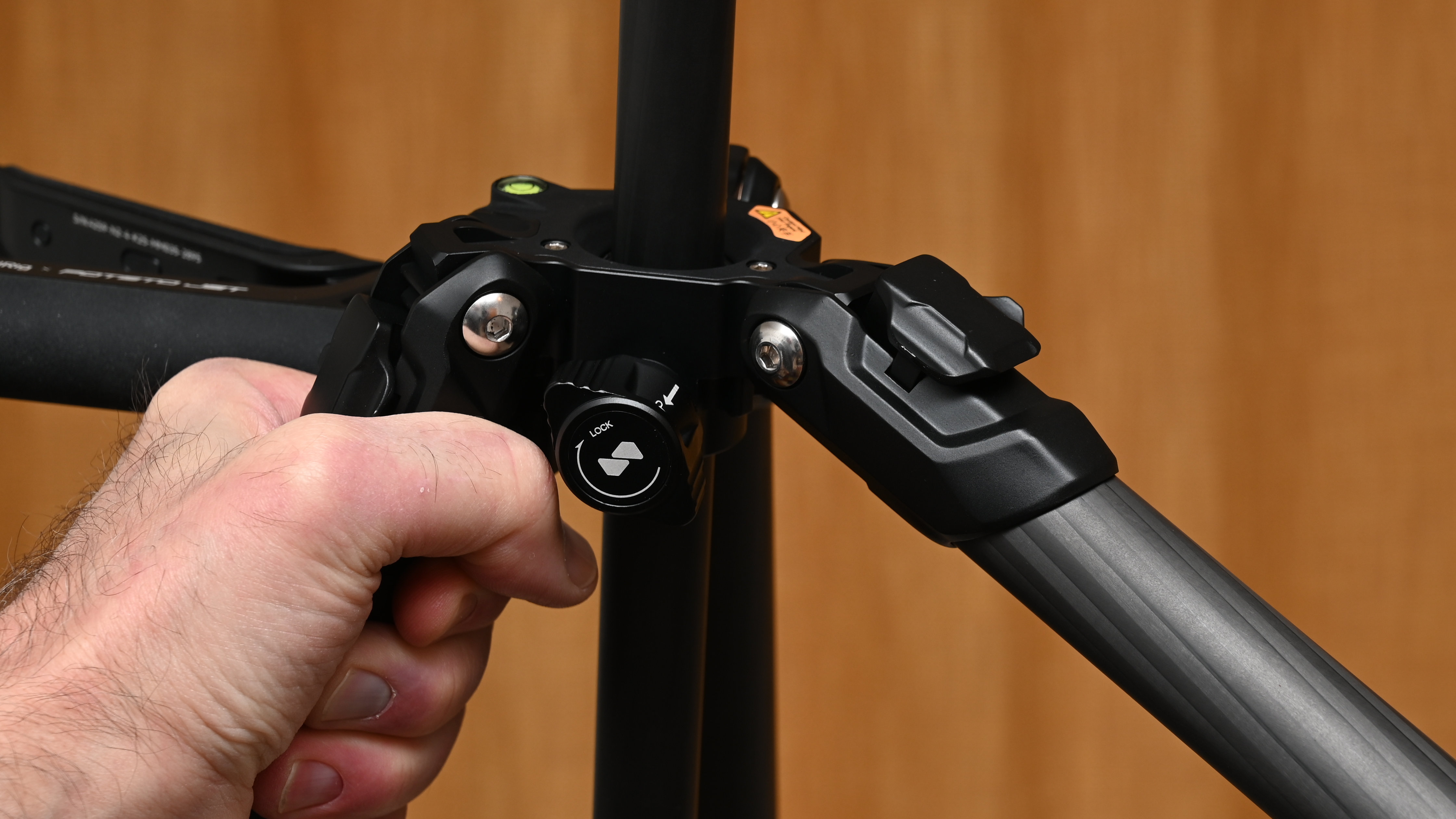
SmallRig x Potato Jet: Verdict
On balance, I’m pretty keen on the Potato Jet. It sets out to be a robust yet reasonably compact and lightweight video tripod, that’s easy to carry around and even easier to set up when you’re in a hurry. However, I found that the hydraulic clutch system for adjusting all of the sections in all three legs, all at the same time, was a little lacking in precision, compared with most specialist, up-market video tripods that I’ve used. I also found that rigidity and resistance to flexing wasn’t quite as good as I was hoping for. All in all, I think it’s a good tripod, but not entirely great.
| Features | The hydraulic clutch is the standout feature and the fluid head also works well. | ★★★★☆ |
| Design | For speed and ease, the design works well on the whole but lacks a little precision. | ★★★★☆ |
| Performance | Very precise levelling can be a challenge and it’s not the most rigid of video tripods. | ★★★★☆ |
| Value | Considering the complexity of the design and the neat range of features, it’s good value for money. | ★★★★☆ |
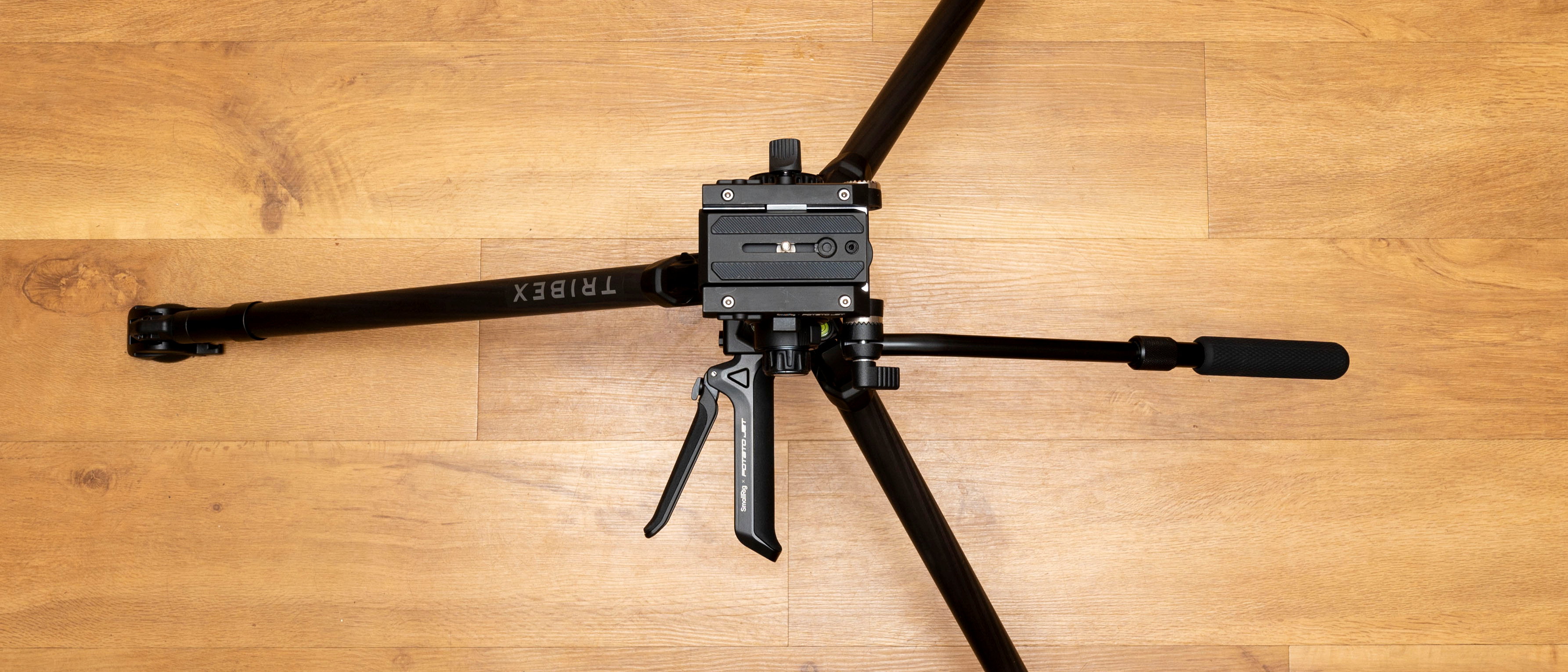
Should you buy the SmallRig x Potato Jet?
✅ Buy this...
- You want a video tripod that’s very quick to set up, avoiding the need adjust leg sections individually.
- You’re content with the level of precision that the hydraulic clutch system delivers, which lags behind that of most half-bowls and other video levelling mechanisms.
🚫 Don't buy this...
- You’d prefer to have really precise control over setting up a video tripod and don’t mind that it can take rather longer.
- You want a more heavy-duty video tripod that’s more resistant to flexing and vibration, giving more solid support.
Alternatives
The 3 Legged Thing Legends Mike Carbon Fiber Tripod with AirHed Cine-V Fluid Head System costs around $899/£749 for the complete kit. It has a 23-157cm operating height Range and a 14kg payload rating.
The Manfrotto 504X Fluid Video Head with 635 Fast Single Carbon Leg is another video tripod that aims to be very quick and easy to set up, and it works really well. It has an operating height range of 44.5-171cm and payload rating of 12kg. The Manfrotto costs around $1318/£1325 but, at the time of writing this review, it was discounted to £999 in the UK.
Matthew Richards is a photographer and journalist who has spent years using and reviewing all manner of photo gear. He is Digital Camera World's principal lens reviewer – and has tested more primes and zooms than most people have had hot dinners!
His expertise with equipment doesn’t end there, though. He is also an encyclopedia when it comes to all manner of cameras, camera holsters and bags, flashguns, tripods and heads, printers, papers and inks, and just about anything imaging-related.
In an earlier life he was a broadcast engineer at the BBC, as well as a former editor of PC Guide.
